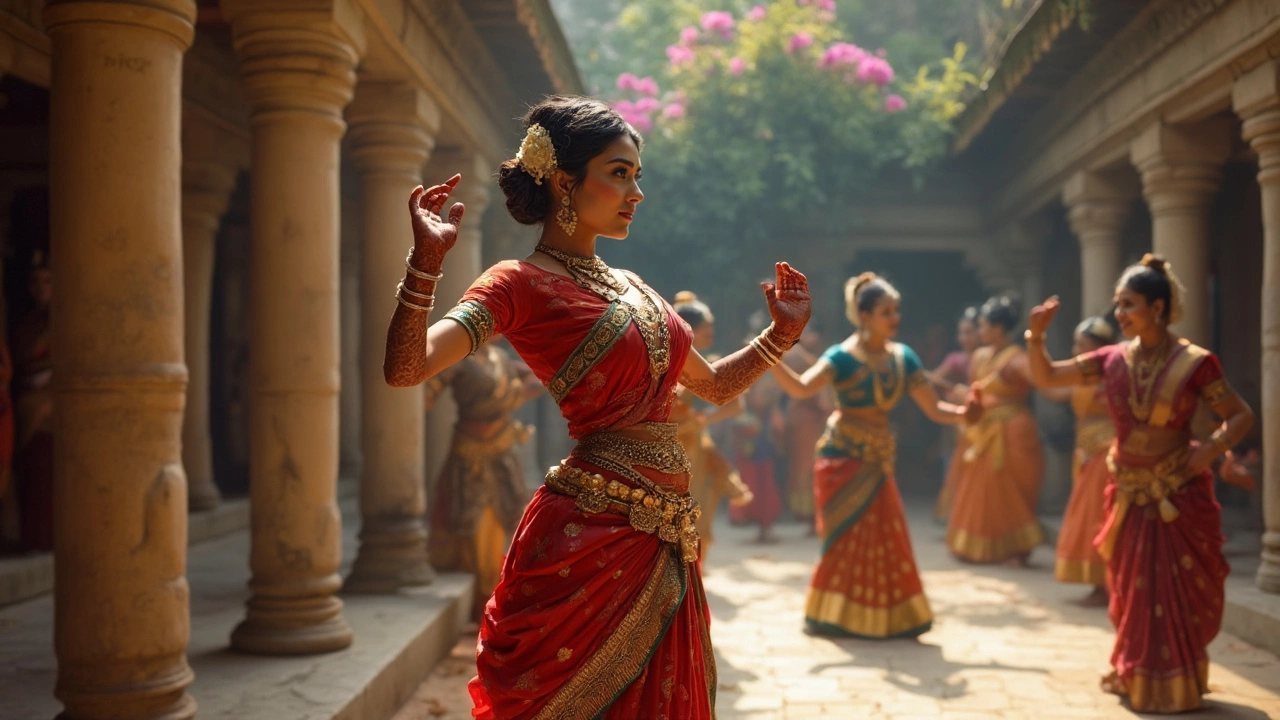Regional Dances of Tamil Culture: Traditional Forms, Meaning, and Living Traditions
When you think of regional dances, performances rooted in local identity, history, and spiritual practice. Also known as folk dances, they are the heartbeat of community life in Tamil Nadu—passed down through generations, not taught in studios but learned in temple courtyards, village squares, and monsoon festivals. These aren’t just moves set to music. They’re prayers in motion, stories told with feet and hands, and celebrations that bind people to land, deity, and season.
Take Karakattam, a dance where performers balance a tall, decorated pot on their head while dancing to drumbeats. This dance, often performed during temple festivals like Mariamman Thiruvizha, honors the rain goddess and carries the weight of centuries-old devotion. Then there’s Theru Koothu, a street theater-dance form that blends drama, music, and ritual. With painted faces, loud drums, and bold gestures, it tells myths from the Mahabharata or local legends to villages that rarely see theaters—turning open roads into sacred stages. And don’t forget Puliyattam, the tiger dance. Dancers smear yellow and black paint on their bodies, move with wild grace, and mimic the hunt—symbolizing nature’s power and the balance between human and wild.
These dances don’t exist in isolation. They’re tied to seasons, harvests, and temple calendars. Karakattam rises with the rains. Theru Koothu peaks during the Tamil month of Aadi. Puliyattam follows the harvest. They’re not performed for tourists. They’re performed because the community needs them—to thank the gods, to scare away evil, to celebrate survival. Even today, in villages near Madurai or Thanjavur, you’ll find kids learning the steps from their grandparents, not from YouTube. The drums still beat the same rhythm. The pots still balance the same way. The stories still carry the same weight.
What you’ll find in the posts below isn’t just a list of dances. It’s a window into how Tamil Nadu keeps its soul alive—not through museums, but through movement. You’ll see how these dances connect to folklore, how they’re tied to music you’ve never heard, and how they’ve survived modernization without losing their edge. Some are fading. Others are being revived. All of them matter.
